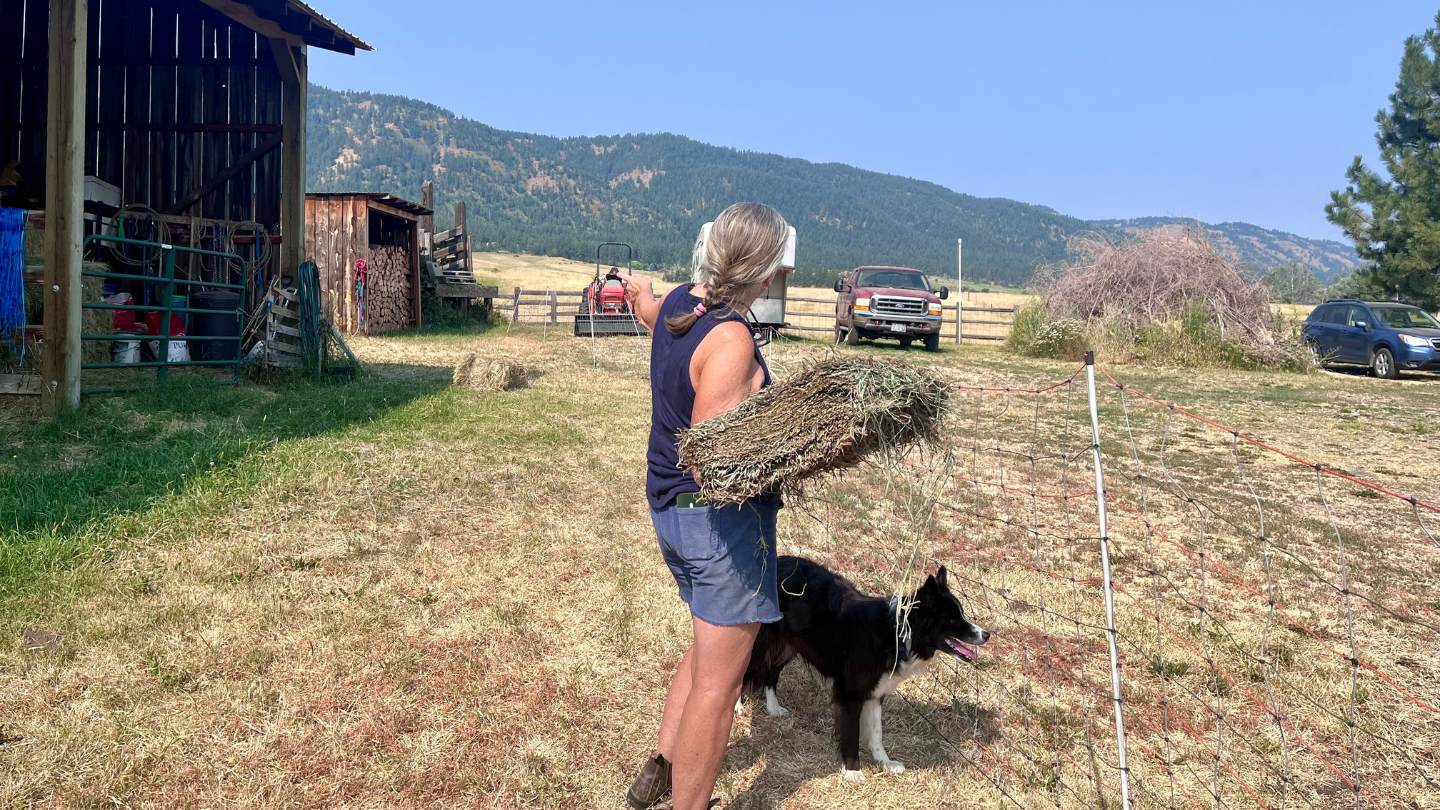
Wolves on the doorstep test sheep ranchers in small town Oregon
The 200 residents of Lostine, Oregon, never expected their small town to become a hotspot for wolf conflict. Surrounded by farm fields and with no recent history of wolf conflict, residents were shocked when wolves began killing sheep in pastures adjacent to their homes.
Kate Barrett and Paul Survis of Ruby Peak Farms were among the first to experience depredations – losing three ewes and 19 lambs in a single night last year. Kate and Paul raise a flock of about 20 registered Jacob sheep – a striking heritage breed that can have up to six horns. However, this year, despite penning the sheep at night and using Fox Lights and fladry, they lost all three of their rams and one of Kate’s favorite ewes, Windy. After 24 years without predator conflict, Kate and Paul had lost 26 in 12 months.
That’s when Kim Kerns, WLA contractor and a sheep and cattle producer in nearby Umatilla County with experience mitigating conflict with wolves, stepped in to help.“The situation in Lostine was really unique in that it occurred in a populated area.” Kerns noted. “The sheep involved were intensely managed including being night penned in what I would consider a very secure and safe manner.”
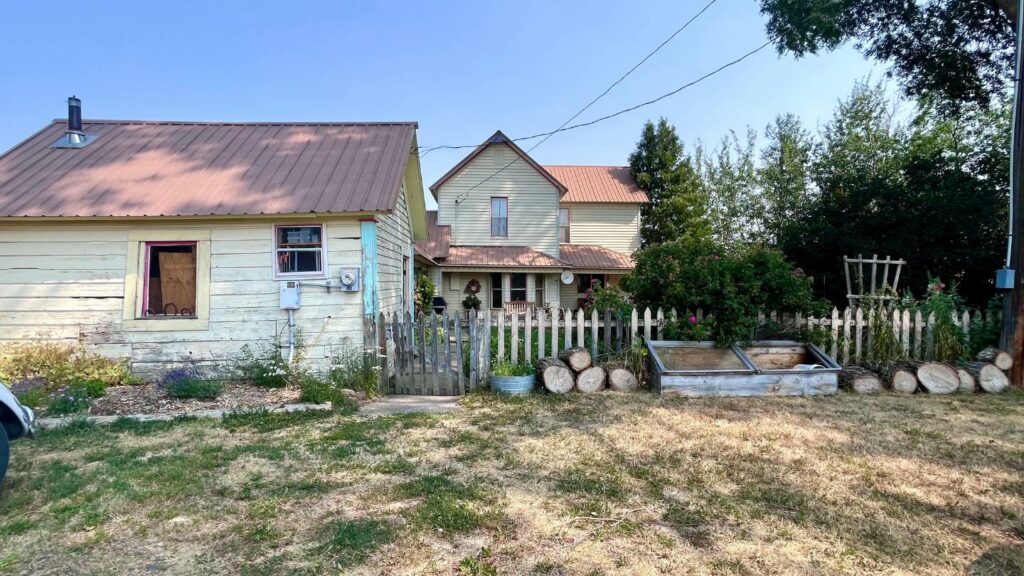
Kate said, “The day my last remaining ram was killed, Kim showed up with her car crammed with rolls of electro net, solar panel, and energizer…It was a hot day, and we were already tired, but Kim got us lined out quickly.” After assessing the landscape and game camera footage of earlier wolf depredations, Kim decided to reinforce the existing barn lot night pen. They installed four 180 foot rolls of electronet 2-3ft away from the existing fence, which would require wolves to jump two fences in one leap. Kate weedwhacked while Paul and Kim rolled out the netting, which took about 1.5 hours to set up. “And then we had to hook up the energizer and solar panels and hope it all worked!” Kate joked.
Kim was also feeling anxious about the set up. “I’ll admit I was pretty nervous going into that first week. I felt that if the wolf figured out how to thwart the electronet our sheep protection tool chest would be pretty depleted.”
Luckily, it worked. Kate shared, “We caught the wolf on our trail cams checking out the fence, getting zapped, and hightailing it out of here.” Unfortunately, this caused that wolf to kill sheep owned by a neighbor about a mile away, but now that neighbor also has an electronet installed. In fact, Kim put on a workshop for other producers in the community, who along with other concerned families, formed a grassroots group called the Lostine Livestock and Community Protection Association. Kate described, “We got a whole course in wolf prevention, and quite a bit of info on wolf ecology from Kim, as well as lots about volts, and amps, and grounding, and charging. I was so happy to be working with someone who understood the heartache and stress of losing members of my flock, and had the practical experience to make it stop.”
Despite the success, Kim noted how context-specific nonlethal measures are, “I think the most important thing to consider when implementing nonlethal predator mitigation tools is that not every tool fits every situation, and not every tool works the way you think it will. Every predator is unique and has figured out a method that works for them, so our strategies often require some creativity. It’s really important to size up the situation, the livestock, and the area you’re trying to defend.”
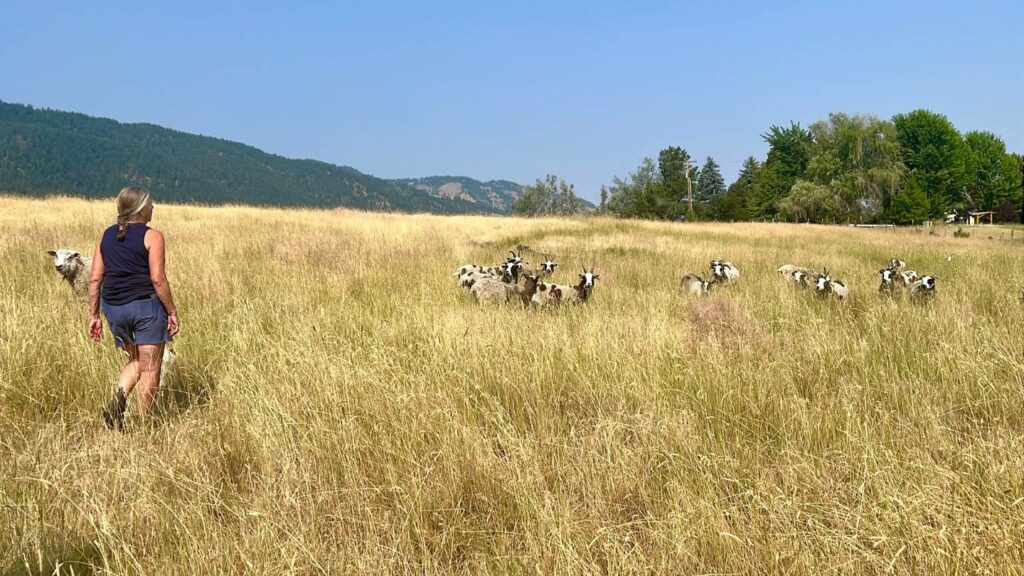
Since installing the electronet, Kate hasn’t experienced more losses. However, she remains vigilant, testing the charge on the fence daily, especially because late summer can bring increased conflict as wolf pups’ nutritional requirements increase and wild prey become harder to kill. Recently, Kim checked in with Kate to troubleshoot some charging issues. As Kate put it, “I am still on the learning curve for making electronet my friend, but our relationship has a firm foundation thanks to Kim.”
Like many ranchers, Kate has had to adapt to changing conditions. “Just like climate change – if I can learn to farm with less water, and hotter summers with more temperature variability, and work in smoke for 2 or more months a year, I can learn to keep my sheep safe,” she said. “I am so grateful WLA and Kim were ready, willing, and able to step up and help me learn to deal with my new reality of raising sheep in wolf country.”
Despite the steep learning curve of dealing with wolf depredations, and having to rebuild their flock after such a huge hit, Kate remains hopeful, “I have found another ram, and hope to attempt to lamb next year without any predation losses. I feel so much more prepared to keep my flock safe. And I know who to call if things go bad.”
Sorry, the comment form is closed at this time.


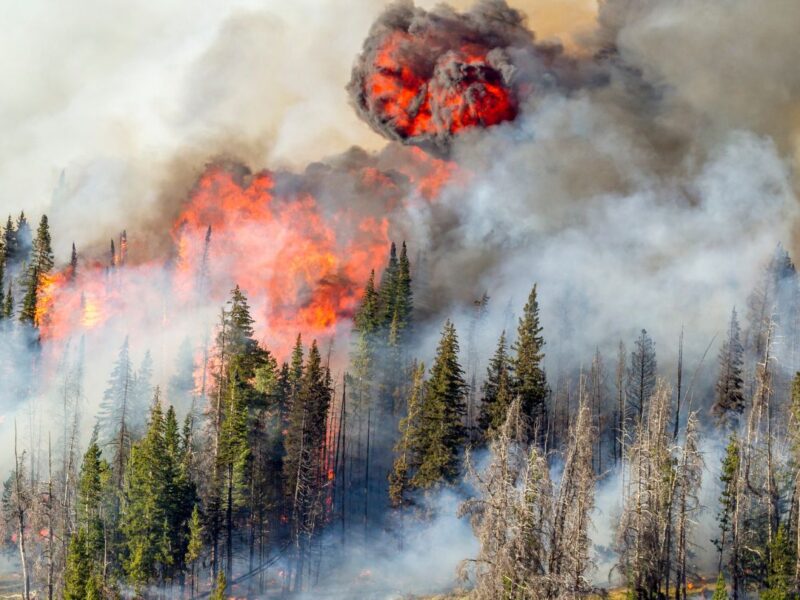
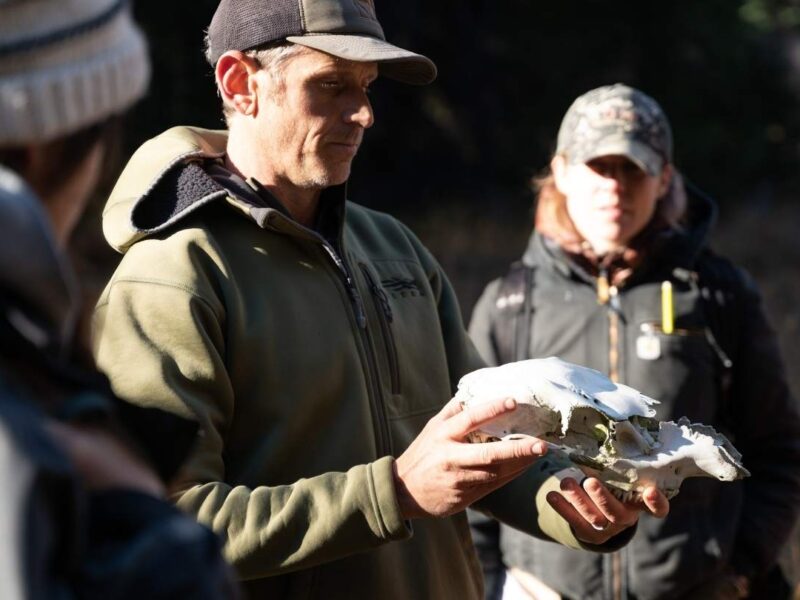
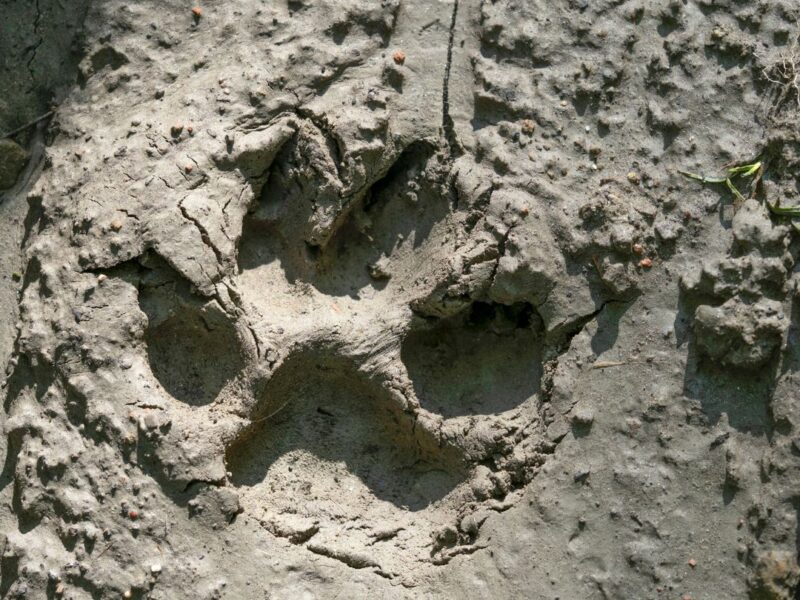
Ernie Meyer
every livestock producer should take notes; good job done.
Kay
mostly the ravaging fires have changed the wolves habitat and their hunting grounds. this article does nothing to offer anything towards efforts to help animals losing their habitat and restoring habitat for both… and the answer is NOT just to thwart or exterminate as this won’t solve anything other than huge expenses for land owners and causes less habitat for wildlife. I feel for the ranchers and stress the domesticated animals have to now tolerate but the wolves need to eat too. this is from some kind multidisciplinary scientist in “wildlife conflict”… hoping wolves move on after everyone is armed with latest electric perimeters is helpful but doesn’t work towards supply and demand created by the fires especially
Rick Danvir
Great article and great job of managing a tough situation.
Kelli
We shouldn’t have to do this we should be able to protect what is our personal paid for property. This wolf is not wild anymore if he is coming that close to houses. It is domesticated and needs to be gotten rid of.
STEVE
Truth, and beyond that, the US government should be held accountable for the reintroduction of these murderous beasts in the first place!
Fred Hilkey
Curious if they get reimbursed for their loss , like cattle ranchers do ?? Like any livestock , there is value lost .
Guss
I agree.
Becky
Livestock dogs are also a great asset to have to protect your sheep
Elaine Rust
Livestock dogs!!
Angela Nash
It is legal to kill wolves harassing/killing your livestock, you do not need a permit. This situation is dire because wolves are so comfortable coming in town, near homes and killing. This situation will escalate. I feel strongly ODFW needs to take this pack out before it’s too late. The wolves will not change their behavior and now the pups will be joining in. It’s simply shocking these folks have had to endure this while ODFW has their hands in their pockets. Tragic and so unnecessary. 😔
Joshua Pinkley
Not sure why the government brought wolves back? Humans manage deer and elk much better. If you have a hard winter you issue less tags. If you have too many deer or elk issue more tags. Hunters only kill the designated sex and only hunt at the appropriate time of year. Wolves just kill till they run out of food. City hippies like wolves because they never have to actually deal with them. They romanticize the Disney version of predators. Not to mention the depredation side of it. An odfw friend of mine said wolves actually spread cwd, they eat the spine or brain matter, travel large distances then deficate the prions. I see no benefit to the introduction of Canadian timber wolves. I have watched the deer and elk habits change and numbers fall. Nothing good comes from wolf introduction. It’s rumored that the small Oregon moose population is wiped out now from the wolves. Just another casualty of the wolves.
Serena
Absolutely I was born and raised in lostine and still live here today these wolves need to be delt with I’m kinda afraid to be outside at nite and to let my dog out anytime we shouldn’t have to put up baracades or anything else my grandad ran cattle for 50plus yrs and we never used to have to worry about these obnoxious animals I say shoot shovel and shut up
Linda
They need to get Great Pyrenees guard dogs. Most effective to keep predators away, will guard and attack any wolf who target your sheep .Brave and inherent guarding abilities. Have 2000 year breeding to guard sheep.
Most wolves will not come near upon hearing a wolf killer is on guard.. I have proof of that in Idaho.
Will
Live in Colorado. With the reintroduction of wolves this will be a problem. Governments should be made pay for every ewe and lamb. Every lamb them ewes could have and and every lamb their lambs could have had.
We ranchers work hard every day. With little to no time off. We honestly didn’t need the stress of having to deal with wolves to live our lives. The were no longer in the states and we didn’t need them back.
I honestly hope the start killing peoples pets. May then they will see why we didn’t want them back in the lower 48
Maury.Heberer
It doesn’t matter we shouldn’t have wolves here at all dumbest thing was to re introduce them anywhere people shouldn’t have to deal with this everything is suffering elk deer livestock we don’t have the vast timberland to support them Canada and Alaska still do
Janet
Awesome post, and yes the more we smaller farmers get to know how these predatory beings think can help us to hopefully out whit or keep up with expected or unexpected devastating attacks..
Deva
This women is learning how protect her livestock WITHOUT KILLING. DETERR!
SO…? U HATE N KILL A WILD ANIMAL LIVING HIS NATURAL WAYS YOU NEED TO BE GOT RID OF… .. YOU become the predator that Destroys the natural Food chain.so at some point YOU may MISS YOUR NEXT MEAL..
THIS WOMAN IS HELPING RANCHERS !
KILLING IS NOT ALWAYS THE SMARTEST THING TO DO…SHE IS GOING TO BE INCREASING THESE SHEEPS LIVES..AND DECREASING THE STRESS FOR OWNERS..LEVEL SO THE RANCHERS HAVE RESTORED BALANCE.WILL HELP SO MANY OWNERS TO SAVE THEIR FLOCKS
Your arrogant “Demands” about rights n ownership of an animal are ridicules.
Kerri
Thank you for sharing. When I was deliver between South of La Pine and Gilchrist in 2016-18 I would see wolves early in the morning as I would head out after midnight. They would cross Hwy 97 West to East. Black and a White wolf. Huge that’s for sure.
Be safe and hope your flock flourishes ❤️
Will
Very curious why every single Livestock owner especially in that town does not have three Livestock guardian classic breed dogs that are about 150 pounds ? You actually need that on top of your electric netting but it was good to find out there is such a thing as low netting to make two fences compared to the usual 3 to 4 strands of electrified wire made to at least 6 foot to 8 foot tall at the top of the fence for wolf and other creeps. Hoping those sheep ranches are not too close to each other for fear of barking dogs upsetting neighbors. If you have small livestock to protect, you have to close your windows and deal with The barking noise (and hopefully not have one that barks nonstop excessively at nothing serious.
Dan Koch
Just wait till the griz follow the wolf in .I have heard reports of grizzly bear near Wallowa Lake. And confirmed reports in the Washington end of the Blue Mountains
Moose,wolf and bear are all head this way no matter how much the State of Oregon says otherwise
Jesse Youngren
I told odfw last year there was a problem when I hunted in sled springs just outside of Enterprise OR last year. I saw over 50 wolf kills some of the elk cows and deer still left for wast. Sad they are going to let wolf’s kill all the wildlife and already getting into farms and there animals and pets. When will they start to let hunters manage the wolf’s I’m afraid it’s going to be too late and damage beyond repair for many years will happen.
Phillip Black
What you said is totally true. Get rid of the wolf’s da da .the problem is solved.
Sheepishly living in Oregon
Beware of the great wolf in sheep’s clothing! But always be on the lookout for the smart sheep in a nice fur wolf coat.
James Butler
The folks who wanted the wolves should themselves pay for the deterrence costs, including the dogs, and for the livestock lost. That’s just fair. And by “folks” i do not mean all taxpayers.
Ron Grigsby
It’s time to bring in the Anatolian Shepards. A breed that goes back to 6000BC.
Linda Wafford
We live about 1 1/2 miles out of Lostine. The wolves are just above us on the mountain. We can sometimes hear them howling. Our Akbash dogs are best protection. Our old guy, Gus, had blood all over his face and neck last week. No wounds on him so he must have won the fight!